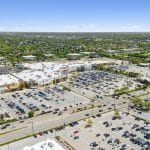Source: Yahoo! News —
For Mel Ligon and his wife, remnants of the 2008 housing crisis kept them from realizing major savings from refinancing their Chicago home during the pandemic refi boom.
They had a deferred principal placed on their home during the Great Recession when they used a government program to refinance after their household income dropped by half. About a decade later, that prevented them from benefiting from the historically low mortgage rates.
“Even when homes started to recover, we have this $88,000 deferred principal, which in essence would be our equity in the future that we wouldn’t have access to until 2050,” Ligon, an independent real estate broker, said.
Unfortunately, their story isn’t unique and instead illustrates how Black homeownership is often caught up in the institutional failures of the past and the continued transgressions today such as appraisal bias, mortgage discrimination, and even redlining.
And as housing affordability quickly erodes with rapidly higher mortgage rates and another potential recession looming on the horizon, the pursuit of the American Dream again becomes harder for many Blacks to achieve and, with it, the chance to build intergenerational wealth.
“The damaging impacts of high interest rates and inflation are already clear and disproportionately harmful to Black households,” according to the 2022 State of Housing in Black America (SHIBA) report. “Because higher mortgage interest rates decrease home purchase affordability, Blacks, relative to Whites, will be further disadvantaged in their homeownership search.”
Scars of the Great Recession linger
While the homeownership obstacles Blacks face trace back to the founding of the country, the largest recent setback was the Great Recession.
Black homeownership was 48% before it was decimated by the 2008 foreclosure crisis characterized by irresponsible — and in some cases, predatory — lending that disproportionately affected communities of color.
“In the lead up to the Great Recession, white families with annual incomes of less than $30,000 were less likely, on average, to get subprime mortgages compared with Black families with incomes of more than $200,000,” according to a report by the Aspen Institute’s Financial Security Program (Aspen FSP).
In the years following the foreclosure crisis, Black homeownership fell and eventually hit a 50-year low in 2019 at 40.6% — lower than the rate in 1968 — and hasn’t returned to pre-Great Recession levels. At the same time, the white homeownership rate has exceeded pre-recession levels, according to the National Association of Real Estate Brokers (NAREB).
“It was 10 years before Black neighborhoods really started to see the turn,” Ligon said. “Our neighborhoods take a long time to recover.”
Then the pandemic hit, bringing its own disproportionate economic pain and job loss to the Black community.
That kept many from taking advantage of historically low rates in the first year of the pandemic. For instance, Black homeowners received only 3.7% of the $5.3 billion in savings from pandemic refinances through October 2020, according to a Federal Reserve Bank of Boston study.












